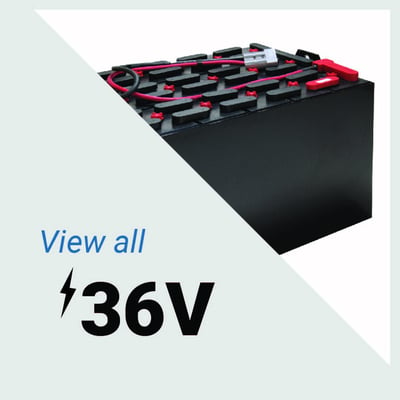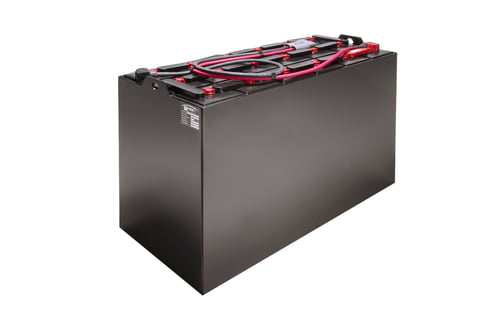
The Industrial Batteries Life Cycle Explained
Industrial batteries are backbone components in various sectors, powering everything from forklifts to backup energy systems. Understanding the complete life cycle of these batteries can help businesses optimize their operations and ensure sustainability.
The Industrial Batteries Life Cycle Explained
When we talk about the industrial batteries life cycle, we're diving into a fascinating journey that begins with raw material extraction and ends with recycling or disposal. This cycle is critical not just for manufacturers but also for users who rely on forklift batteries and other industrial battery applications.
1. Raw Material Extraction
The very first step in the life cycle of an industrial battery involves sourcing the raw materials necessary for production. Common materials include lead, lithium, nickel, and cobalt—each vital for creating different types of batteries.
a. Sourcing Materials
- Lead: Traditionally used in lead-acid batteries, lead is mined from ores like galena.
- Lithium: Essential for lithium-ion batteries, lithium is extracted from brine pools or hard rock mining.
- Cobalt & Nickel: These metals enhance battery performance and increase energy density.
The extraction of these materials often raises ethical and environmental concerns. Are the mining practices sustainable? Are the workers treated fairly? These questions are crucial as industries strive to balance progress with responsibility.
b. Environmental Impact
Mining can have significant ecological consequences, including habitat destruction and pollution. Companies are increasingly held accountable for their sourcing practices.
"Sustainable sourcing isn't just a trend; it's becoming a necessity." - Industry Expert
2. Manufacturing Process
Once raw materials are sourced, they undergo rigorous processing to create battery cells. This phase includes several steps:
a. Cell Production
The manufacturing process differs based on battery type:
- Lead-Acid Batteries: Involves mixing lead oxide with sulfuric acid.
- Lithium-Ion Batteries: Requires assembling electrodes (anode and cathode) along with electrolyte solutions.
Each type has its own unique production challenges, requiring skilled labor and advanced technology to ensure safety and efficiency.
b. Quality Control
Quality control is vital during this stage to ensure that each battery meets industry standards. Regular testing helps prevent defects that could lead to safety hazards or reduced performance.

3. Distribution and Use
After manufacturing, the next step is distribution to retailers or direct consumers. Here’s where forklift batteries come into play:
a. Application in Forklifts
Forklift batteries are designed lead-acid forklift batteries for heavy-duty use in warehouses and manufacturing facilities:
- Performance: They provide sustained power over long periods.
- Maintenance: Regular checks are needed to prolong lifespan.
Companies must understand how to manage their fleet effectively to maximize uptime while minimizing costs.
b. Training Users
Proper training on how to handle industrial batteries significantly impacts their longevity and efficiency:
4. End-of-Life Management
As industrial batteries reach the end of their useful life, it’s essential to manage them responsibly:

a. Recycling Options
Recycling plays a pivotal role in mitigating waste associated with industrial batteries:
- Lead-Acid Batteries: Over 95% can be recycled.
- Lithium-Ion Batteries: Can be repurposed or recycled but require careful handling due to potential hazards.
A robust recycling program not only conserves resources but also aligns with increasing regulations around waste management.
b. Disposal Methods
For those components that cannot be recycled, responsible disposal methods are critical:
- Hazardous Waste Facilities: Ensure safe disposal of toxic elements.
- E-Waste Programs: Provide guidelines for disposing of electronic components safely.
5. Regulatory Compliance and Safety Standards
Navigating the world of industrial batteries involves understanding numerous regulations aimed at ensuring safety and environmental protection:
a. Industry Standards
Organizations like OSHA (Occupational Safety and Health Administration) set forth guidelines regarding safe handling practices for forklift batteries and other industrial units:
- Proper ventilation during charging
- Use of personal protective equipment (PPE)
Compliance ensures not only legal adherence 12 volt flat plate forklift batteries but also fosters a culture of safety within organizations.
b. Environmental Regulations
Various local, national, and international regulations govern the disposal of hazardous materials from industrial batteries:
Understanding these regulations helps companies avoid hefty fines while promoting sustainable practices.
FAQs About The Industrial Batteries Life Cycle
Q1: What types of industrial batteries exist? A1: The most common types include lead-acid, lithium-ion, nickel-cadmium (NiCd), and nickel-metal hydride (NiMH) batteries used across various applications like forklifts, UPS systems, etc.
Q2: How long do forklift batteries typically last? A2: On average, forklift batteries can last between 3 to 7 years depending on usage patterns, maintenance practices, and charging habits.
Q3: Can industrial batteries be recycled? A3: Yes! Most components of industrial batteries can be recycled effectively; however, processes vary by battery type—lead-acid being highly recyclable compared to lithium-ion which requires specialized facilities.
Q4: What factors influence an industrial battery's lifespan? A4: Factors include charge cycles, temperature fluctuations during operation & storage, maintenance habits, as well as overall design quality.
Q5: What should I consider when purchasing forklift batteries? A5: Buyers should assess capacity needs based on operational requirements; warranty terms; compatibility with existing equipment; maintenance support services offered by suppliers; as well as energy efficiency ratings.
Q6: How does improper disposal affect the environment? A6: Improper disposal can release toxic substances such as lead or cadmium into soil & water sources leading to harmful ecological consequences & public health risks over time.
Understanding “the Industrial Batteries Life Cycle Explained” equips businesses not just with knowledge but also responsibility toward sustainable operations and best practices in managing valuable assets like forklift batteries throughout their life spans—from cradle to grave.